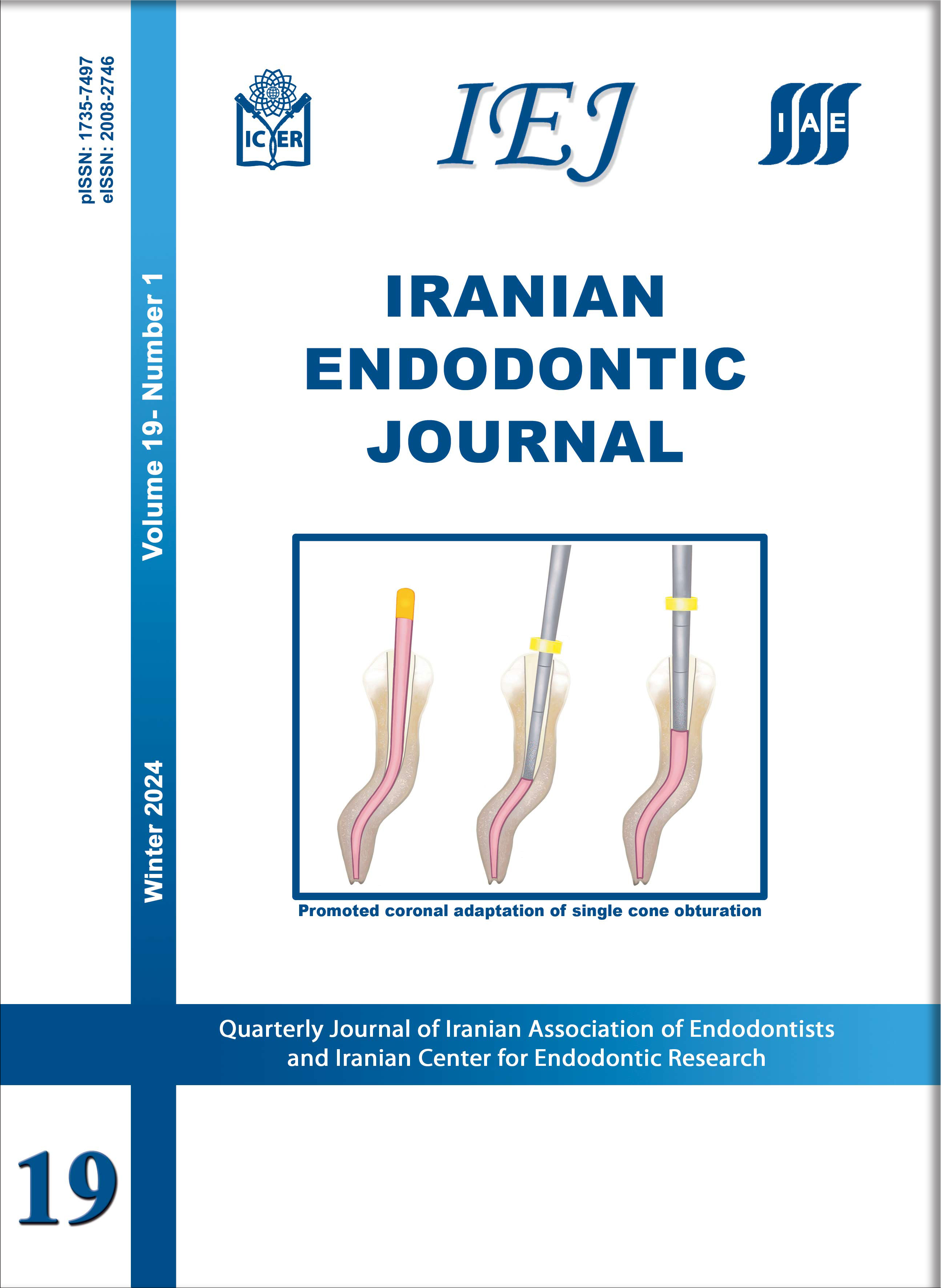A comparative study on anti-hyperalgesia effect of MTA and Ketoprofen in inflammatory pain
Iranian Endodontic Journal,
Vol. 4 No. 3 (2009),
6 July 2009,
Page 81-86
https://doi.org/10.22037/iej.v4i3.1414
INTRODUCTION: Mineral trioxide aggregate (MTA) is an endodontic material with different clinical applications e.g. root-end filling, pulp capping and perforation repair. It has been reported to possess antimicrobial and antifungal activities. The aim of this study was to examine the effect of White MTA on formalin-induced hyperalgesia in a rat with inflammatory pain. MATERIALS AND METHODS: Inflammatory pain was induced by subcutaneous (SC) injection of formalin (40 µL, 2.5%) into the rat upper lip. The nociceptive behavioral responses i.e. shaking of the lower jaw and face rubbing were quantified. 40 µL of eugenol (50 mg/kg), WMTA (20 mg/0.2 mL) or ketoprofen were injected solely or in combination with formalin 2.5% and the behavioral responses were compared with those observed after formalin treatment alone. One-way ANOVA, Tukey were used for analysis of data. RESULTS: Formalin 2.5% provoked a biphasic nociceptive response, with an early and short lasting first tonic phase followed by a second phase. Solely SC injection of either WMTA or ketoprofen (a non steroidal anti-inflammatory drug) did not stimulate any significant nociceptive behaviour. However, injection of eugenol (a pain relieving agent) induced the early phase not the tonic phase of nociceptive response. WMTA, eugenol or ketoprofen injection 20 min before formalin injection attenuated the first phase but somehow prevented the induction of the second phase of nociceptive responses which were produced by formalin. Behavioural nociceptive responses including shaking of the lower jaw and face rubbing were significantly reduced when the subject was pretreated with either WMTA or ketoprofen (P<0.001). CONCLUSION: In this study, WMTA induced pain reduction by suppression of the formalin-induced nociceptive response.




